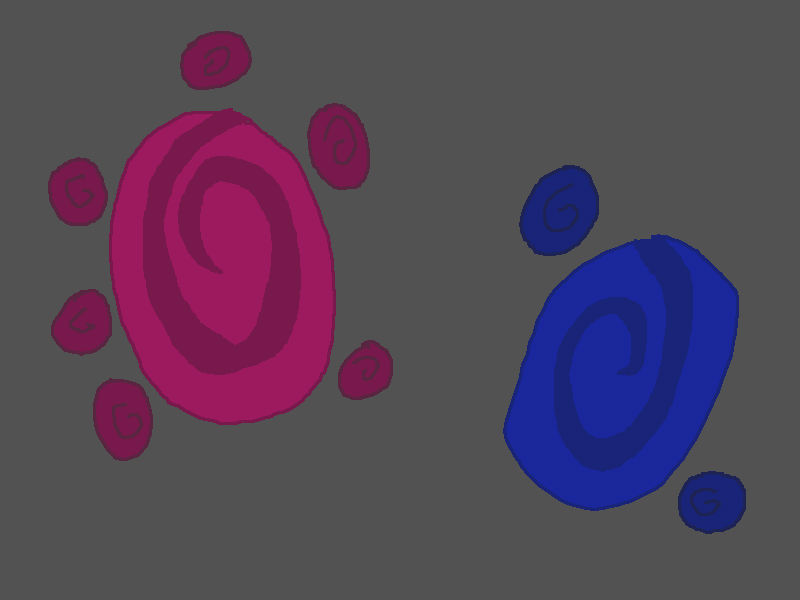Candyonen
Basic Information
Growth Rate & Stages
Sexual Maturity:
Upon reaching sexual maturity, the male and female Candyonen go out in search of a spouse; once they have found a proper spouse, they break their half of the birth bond with their companions and bond to their spouse. After a male and female Candyonen bond, the female will be fertile once every second cycle- once mated, the female may carry her (dormant) clutch in her womb for up to half a cycle while the pair's companions lead them to a proper nesting site, prepare the area, and wait for the best time to lay the eggs. Once the eggs are laid, the companion Candyonen break their bonds with the male and female Candyonen, and remain with the nest while the male and female run off to do as they please.
Average Nest Ratios:
6:1 caregivers to females
2:1 protectors to males
1:1 females to males
Caring for the Nest:
Once the male and female have left, the caregiver Candyonen arrange the eggs so that each male and female egg is near to their birth-bonded sibling companions (determined by the Arcoperception of the caregivers), and the protector Candyonen venture out to begin hunting food and warning off smaller predators. Over the course of the next year, the protectors hunt only enough to feed themselves and the caregivers, the caregivers keep the nest clean and the eggs warm, and the eggs grow (over the first few months, about 125% of the laying size), and the shells harden. As the hatching time approaches, hairline fractures appear in the eggs as small founts of Arcen zips out, starting along the edges of the designs, and webbing out from there. The Candyonen emerge from the eggs anywhere between 8 months and a year and a half after laying.
Caring for the Hatchlings:
Once born, the male and female hatchlings are already birth-bonded to their companions. At this stage, the hatchlings are able to move around (clumsily), and they spend a lot of time socializing with their birth bonds. It is at this stage that any unbonded offspring die, as the lack of shared lifeforce is like a lack of nutrition- it is very rare for a hatchling to be unbonded.
After a cycle of caring for hatchlings- long enough for the hatchlings to have learned most of what they need to survive- the adult companion Candyonens' bonds with the nest weaken, and any passing adult Candyonen may bond with them. Usually, the original parents of the clutch return to collect their companions, but the race for power means that others may be waiting just beyond the nest for the companions to be ready for bonding.
Genetic Ancestor(s)
Scientific Name
Spirit
Remove these ads. Join the Worldbuilders Guild










Comments